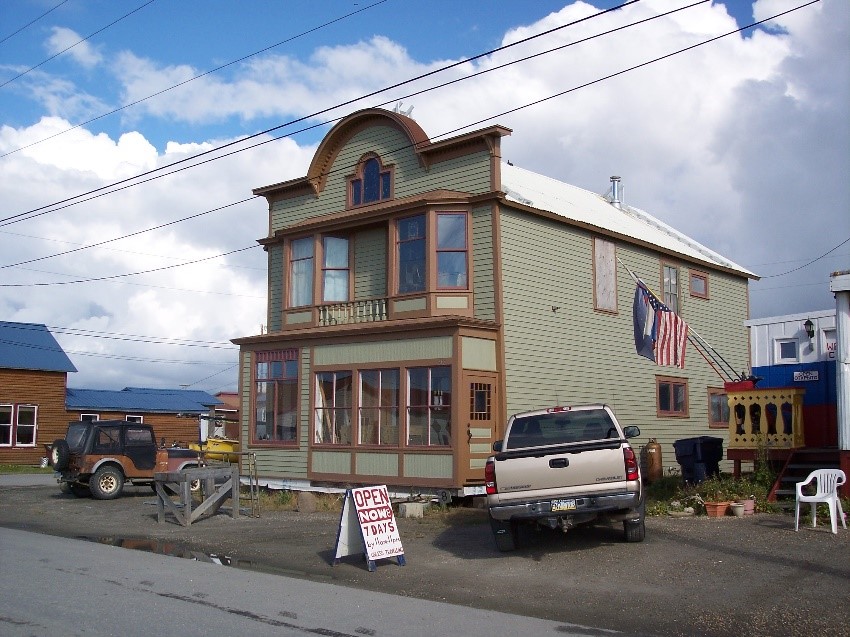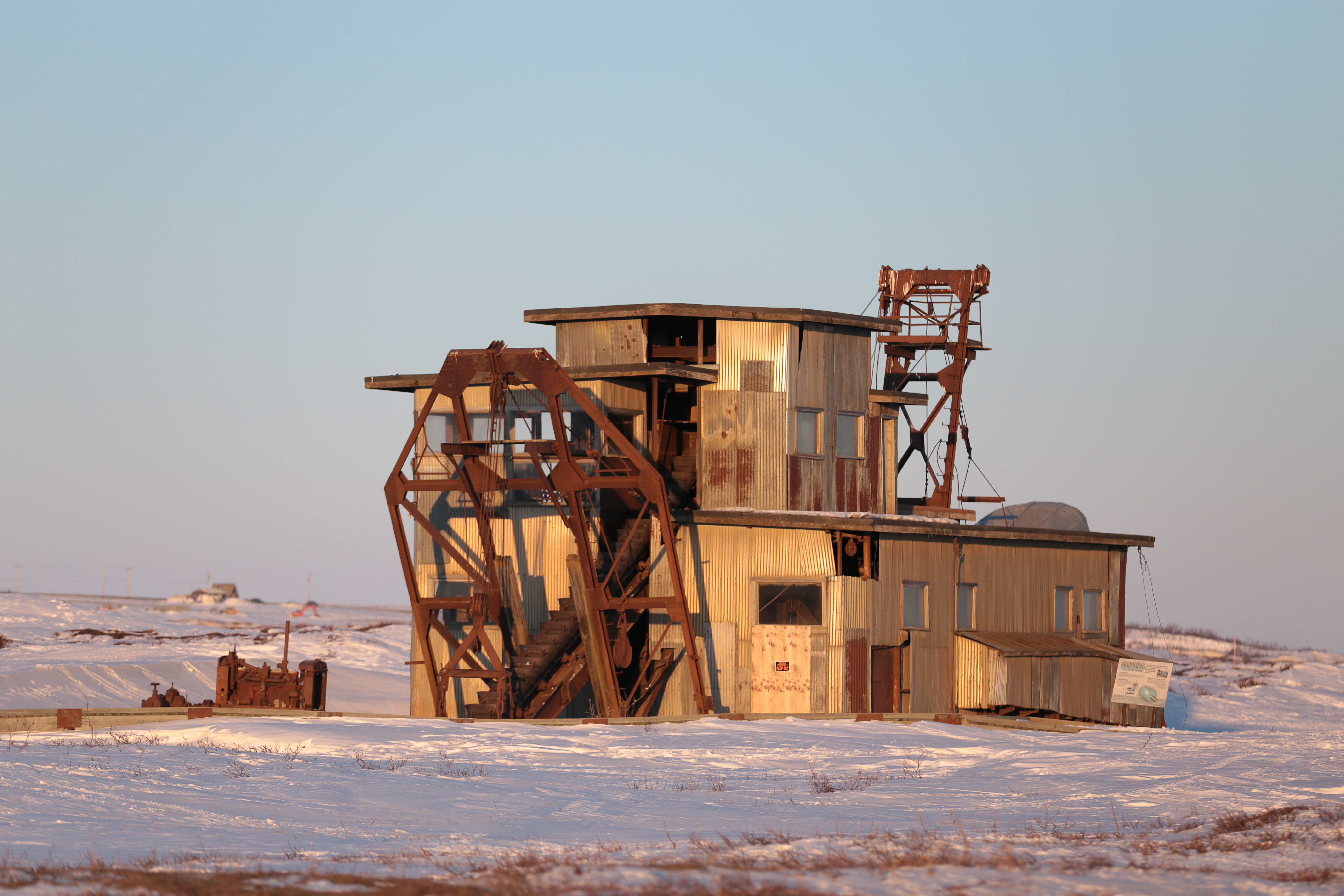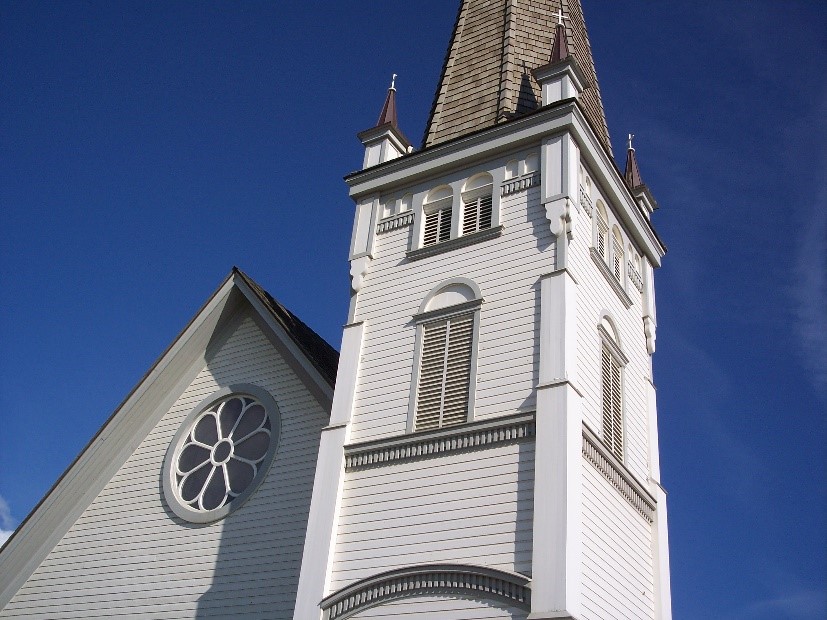City of Nome
2022 Population: 3,469
Size: 21.62 Miles
Planning Commission: Nome's Planning Commission has taken on the required duties of the historic preservation commission under the Alaska Certified Local Government program.
Date Certified: April 24, 2018
Website: https://www.nomealaska.org/
Ordinances: NO. 0-16-07-02

-
CLG Grants
-
Commission Training Grants
NAPC Forum 2018
-
-
A Brief History

Swanberg Dredge Gold, discovered in 1898 by the "Three Lucky Swedes," led to creation of the City of Nome. Miners found gold in the beach sands in front of the town the next year. The discovery sites and "golden beach" are now a National Historic Landmark. Nome's gold rush was perfect for Hollywood, with unscrupulous government officials, legendary figures among them Wyatt Earp, overnight millionaires, survival stories, and participants who became noted authors. Nome became Alaska's largest town in 1900, then saw its population decline from 30,000 to 5,000 over the next ten years. Because of fires, storms, permafrost, and neglect, there are only a few extant properties from this early gold rush period: the Discovery Saloon, Old St. Joseph's Church, and the Jacob Berger House.
Seward Peninsula mines produced $50 million in gold between 1900 and 1910. After the first year of the rush, companies consolidated mining claims and brought in huge dredges. To operate the dredges, companies dug miles of ditches, such as the Fairhaven Ditch, to get water to their mining operations. The miners and companies encouraged construction of railroads, but none was an economic success. They had better luck getting construction and maintenance of roads and trails, and in 1906 the government's Alaska Road Commission took over marking winter trails. Nome did not have a protected or deep-water harbor, and the town was inaccessible by ship for half of each year because of sea ice. Nome residents successfully petitioned the Alaska Road Commission for a winter trail to the year-round port of Seward, and what is known today as the Iditarod Trail was blazed in 1910.
With the media romanticizing winter travel using sled dogs, Nome started the All-Alaska Sweepstakes sled dog race in 1908 and held it ten times. In 1925, fearing a diphtheria epidemic in Nome, the Territory of Alaska organized delivery of serum by a sled dog relay from Nenana. The relay was widely publicized and mushers Gunnar Kassen and Leonhard Seppala, with their lead dogs Balto and Togo, toured the U.S. after. Alaskans rekindled the fascination with long-distance sled dog travel in 1973 when promoters started the Iditarod Sled Dog Race from Anchorage to Nome that is still held every March. Congress designated the Iditarod Trail one of the first national historic trails in 1978.
The year before the serum run, Noel Wien started commercial air service to Nome, and airplanes quickly replaced dog sled travel. In 1940, Nome was one of four Alaska towns with facilities for the most modern aircraft, and the U.S. Army selected it for an air defense post. During World War II, Marks Field was the last stop in Alaska for the more than 1,600 Lend-Lease planes the U.S. provided the Soviet Union. The military continued its presence in Nome through the Cold War, and the towers of the early warning radar station on Anvil Mountain still stand.
When gold was discovered, the Seward Peninsula Inuit people did not have a permanent settlement where Nome would be established. Archaeologists have found evidence that people used the area. The information combined with that from other sites around the Seward Peninsula, have helped us understand the movement of people from Asia to North America across the Bering Land Bridge at least 12,000 years ago. Sites have also provided information about the people who lived on the peninsula before Euroamericans arrived.
Starting in the 1850s, whaling ships obtained coal and traded with the Inuit people on the Seward Peninsula, mostly at Port Clarence, the westernmost point. Christian missionaries came in the 1880s, and worked with the U.S. Government on a program to introduce Siberian reindeer to the Inuit people. The program ended in the 1930s, but there are still reindeer herds and evidence of corrals and stations outside Nome. Missionaries opened schools around the peninsula, and after the 1919 flu epidemic that hit the area particularly hard, opened boarding schools among them at Pilgrim Hot Springs and Teller.
In the 1930s, under the Indian Reorganization Act, Congress approved reservations at White Mountain and Elim east of Nome. Petitions from other Natives in the area, however, were not approved. The Natives later organized the Seward Peninsula Native Association and worked for the Alaska Native Claims Settlement Act. After the act was passed, 6,300 Inuit enrolled in the Bering Straits Native Corporation. This act led to the Alaska National Interest Lands Conservation Act passed in 1980 and the 2.7 million acres Bering Land Bridge National Preserve was created with and its offices opened in Nome.
Starting in 1898, Inuit people around the peninsula moved to Nome for jobs and for their children to attend school. Like many communities, Nome had segregated places and facilities. At the Dream Theatre in 1944, Alberta Shenck, an Inuit woman, was arrested for sitting in the whites-only section. This incident contributed to passage of a landmark anti-discrimination act by Alaska's Territorial Legislature in 1945, nine years before the U.S. Supreme Court's Brown v. Board of Education decision. Unfortunately, the theatre no longer stands.
Since its founding, Nome has been the Seward Peninsula's hub community. It's historic properties help tell its rich history. There are government buildings, commercial and industrial buildings and structures, residences, and buildings of civic and service organizations. The City of Nome became Alaska's 14th Certified Local Government in 2018.
-
National Register of Historic Places Listings

Old St. Joseph's Catholic Church Cape Nome Mining District Discovery Sites
Old St. Joseph's Catholic Church
Jacob Berger House
Erik Lindblom Placer Claim
Snow Creek Placer Claim
Anvil Creek Gold Discovery Site
Cape Nome Roadhouse
Discovery Saloon
